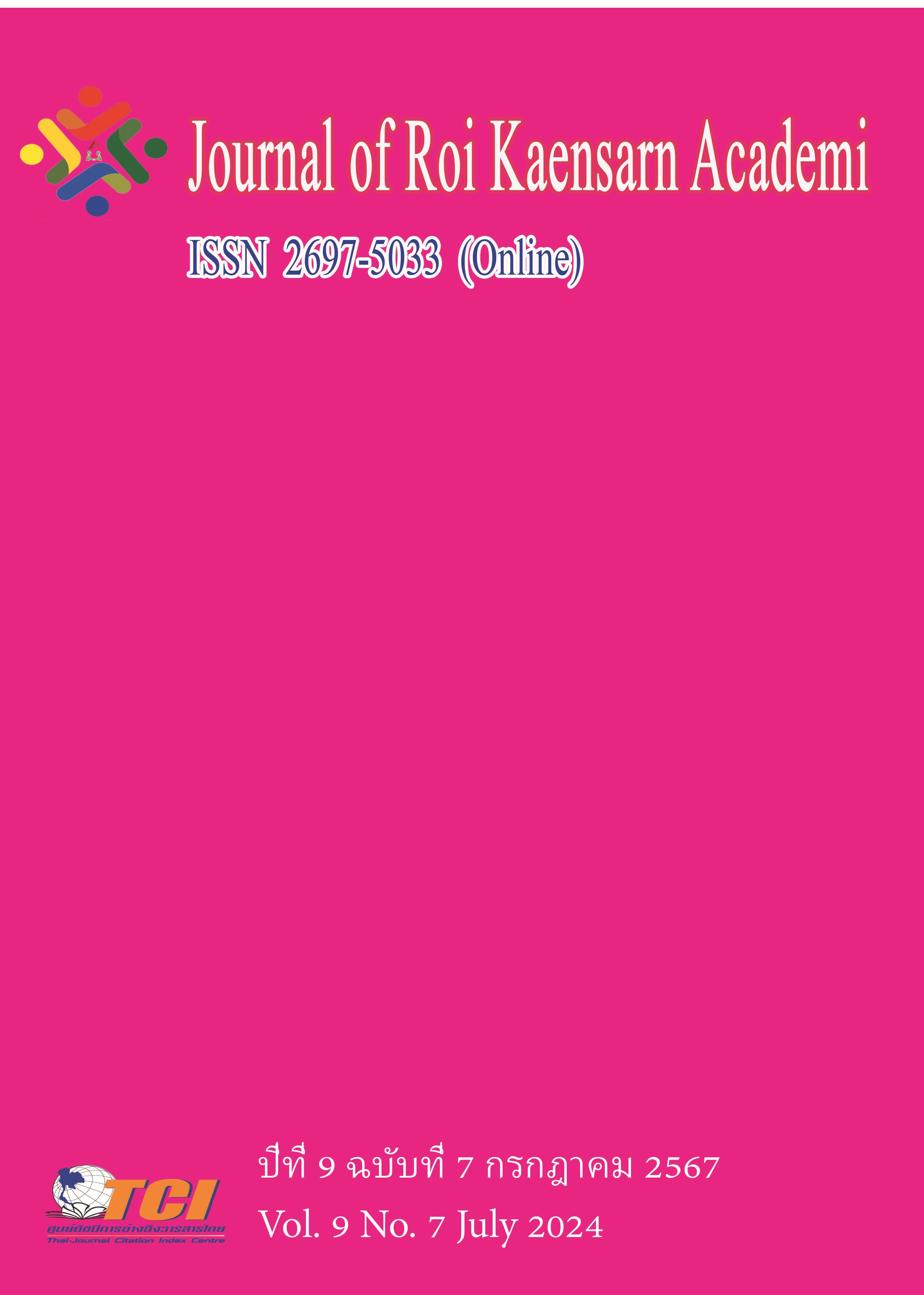The Development of Strategic Leadership Model for Public Kindergarten Administrators in Nanning City of Guangxi Province in People's Republic of China
Main Article Content
บทคัดย่อ
The purpose of this research were:1) To analyze the components of strategic leadership of public kindergarten administrators in Nanning City; 2) To formulate a strategic leadership model for public kindergarten administrators in Nanning City; 3) To evaluate the strategic leadership model of public kindergarten administrators in Nanning City. The research is divided into three stages: The first stage: analyzing of strategic leadership factors of public kindergarten administrators in Nanning City. The sample group was 367 administrators and teachers which are from 40 public kindergartens in Nanning City. The tool was a 5-level scale questionnaire with a reliability of 0.982. Statistics used for data analysis are frequency, percentage, mean, and standard. The second stage: Creation of the strategic leadership model for public kindergarten administrators in Nanning City. The first part is through semi-structured interviews with administrators of three model kindergartens, and the data is analyzed through content analysis; the second part is a focus group discussion to create the model, which is recorded in the form of records by 7 discussion of the experts. The third stage: Evaluating the strategic leadership model of public kindergarten administrators in Nanning City. Five experts and 30 kindergarten administrators assessed the accuracy、appropriateness、feasibility and practicality of the model and manual. The research results were:
1. The overall average value of the strategic leadership components and the average value of all aspects of public kindergarten administrators in Nanning City were at a high level.
2. Five aspects of the strategic leadership model for public kindergarten administrators in Nanning City including:1) formulating a vision; 2) managing resources; 3) formulating development strategies; 4) controlling balanced development; 5) promoting sustainable development.
3. The strategic leadership model and manual for public kindergarten administrators in Nanning City were evaluated by experts and administrators. The accuracy 、adequacy、feasibility and practicality of the model and manual were at the highest level.
Article Details
เอกสารอ้างอิง
Chen, Q. (2010). Research on excellent strategic leadership in dynamic strategic situations. China Human Resources Development. (01), 9-13.
Hitt, M. A.& Ireland, R. D. (1999). Achieving and maintaining strategic competitiveness in the 21st century: The role of strategic leadership. Academy of Management Executive. 13 (1), 43-57.
Hitt, M. A., & Keats, B. W. (1998). Navigating in the new competitive landscape: Building strategic flexibility and competitive advantage in the 21st century. Academy of Management Executive. 12 (4), 22-42.
Huo, G.& Miao, J. (2009). Research on strategic leadership model. Leadership Science. (04), 4-7.
Ministry of Education of the People's Republic of China. (2015). Professional standards for kindergarten principals. Online. Retrieved October 18, 2023, from http://jgswj.zj.gov. cn/art/2015/2/15/art_1543701_35115840.html
State Council of the People Republic of China. (2021). The 14th Five-Plan Plan for Economic and Social Development. Online. Retrieved October 18, 2023, from https://www.gov. cn/xinwen/2021-03/13/content_5592681.htm
Nanning Municipal Government. (2022). Nanning plan for the development of preschool education (2022-2035). Online. Retrieved October 18, 2023, from http://jy.nanning. gov.cn/xxgk/fdzdgknr/jyzhgl/tzgg/t5466363.html
Su, K. (2007). Research and suggestions on the leadership development model of Chinese enterprises (Master's thesis). Shanghai Jiao Tong University, China.
Wu, Y. (2013). Research on strategic leadership development strategies in learning organizations (Master's thesis). Capital University of Economics and Business, China.
Zhao, X. (2019). Investigation and research on the leadership of kindergarten principals in Nanning (Master's thesis). Guangxi University for Nationalities, China.

